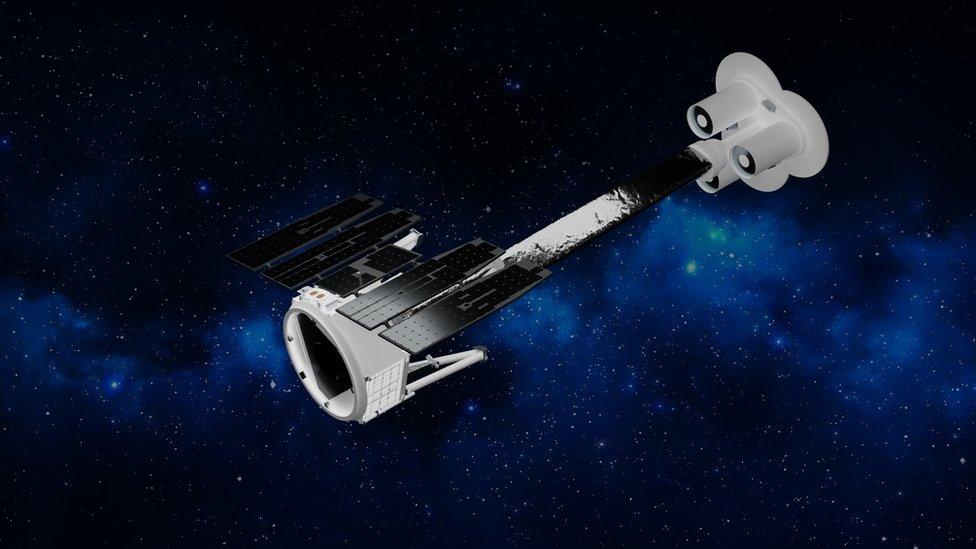Space: Nasa launches an X-ray telescope to study mysterious black holes
- Published
- comments

Artist's impression of Imaging X-ray Polarimetry Explorer (IXPE)
Nasa has launched a special X-ray space telescope to find out more about mysterious black holes.
The Imaging X-ray Polarimetry Explorer or IXPE, will look at some of the highest energy objects in the universe such as black holes and neutron stars.
It will be able to study the shape of these phenomena through the X-rays it gives out.
The satellite launched early on Thursday morning, aboard a SpaceX Falcon 9 rocket, from Nasa's Kennedy Space Center in Florida.
This is an artist's image of a black hole
No light can get out of black holes, which is why people can't see them. Because they are invisible, space telescopes with special tools are needed to find them.
X-rays come from places where matter is under extreme conditions - violent collisions, enormous explosions, fast rotations, and strong magnetic fields. This includes black holes and neutron stars, which are the remains of bigger stars after they have exploded.
What is a black hole?
Black holes are formed when a dying star collapses inward under the pressure of its own weight. This leads to something called a supernova, a star's extremely powerful explosion.
Black holes are places in space where the pull of gravity is so strong that even light can't escape it! This is what makes them hard to see. At the centre of a black hole there's something called a quasar, which is powered by so much activity going on near to the black hole. The light of a quasar can be 600 trillion times brighter than our sun and this is what astronomers look out for when discovering black holes.
Because Earth's atmosphere blocks X-rays from reaching us, they can only be observed by telescopes in orbit.
Polarised light contains a lot of information about where it came from. While waves of light can vibrate in any direction, polarised light is made up of electric fields that vibrate just one way.
IXPE builds on the discoveries of Nasa's Chandra X-ray Observatory and other space telescopes by measuring the amount and the direction of polarisation of X-ray light.
The Nasa mission blasted off at 6:00am UK time
The polarisation measurements should be able to help scientists answer questions like - how do black holes spin? And - was the black hole at centre of the Milky Way actively feeding on surrounding material in the past?
IXPE carries three identical telescopes. Each telescope includes a set of cylindrical mirrors, or optics, and a sensitive detector.
In two months, IXPE will be ready to begin its two-year science mission.
- Published8 December 2021
- Published28 September 2019
- Published15 June 2017
